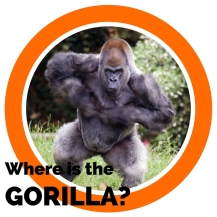For each inspection that I participate in, I’m very critical of myself. This is especially true around not identifying issues which others point out which I have failed to recognise. It’s the curse of not spending ‘enough’ time in field, and the lingering effect of safety needing to be the expert.
Both concepts which in theory I am comfortable with and know better, yet the gap between understanding and feeling is very separate at times. They lurk in wait, those voices in your head.
Why shouldn’t I beat myself up, well, selective attention bias.
What’s this you say? Enjoy doing this test and this test if you have done the first. It’s a great video to show to teams at toolboxes and team meetings for engagement and understanding.
Interesting huh! Being aware of this bias makes you less likely to be affected as much as if you didn’t know about it, yet it’s not a reliable way to never be affected again. A more reliable method to combat bias is to reframe your focus with a priming exercise that reiterates the bias and its likely effects on you. This allows you to be self-aware or be able to witness its effect. Also being transparent in a group environment and enlisting a reliable partner to watch out is useful also, as we are more critical of others than ourselves.
 To continue the effects of the priming exercise it’s useful to have a symbol which neatly summarises the bias, it’s effect and prompts you to re-centre every time you send or hear it (advertising uses it to great effect – think mascots). An example that I have used in the past of a gorilla as a symbol of those high consequence /low likelihood risks has worked extremely well and had sustainable benefits. This makes the concept sticky and uses language that lands and resonates with people. A human brain is a shortcut machine, so let’s give it one.
To continue the effects of the priming exercise it’s useful to have a symbol which neatly summarises the bias, it’s effect and prompts you to re-centre every time you send or hear it (advertising uses it to great effect – think mascots). An example that I have used in the past of a gorilla as a symbol of those high consequence /low likelihood risks has worked extremely well and had sustainable benefits. This makes the concept sticky and uses language that lands and resonates with people. A human brain is a shortcut machine, so let’s give it one.
‘Where is the gorilla?’ is a lot better than ‘Where is the high consequence / low likelihood risk’!